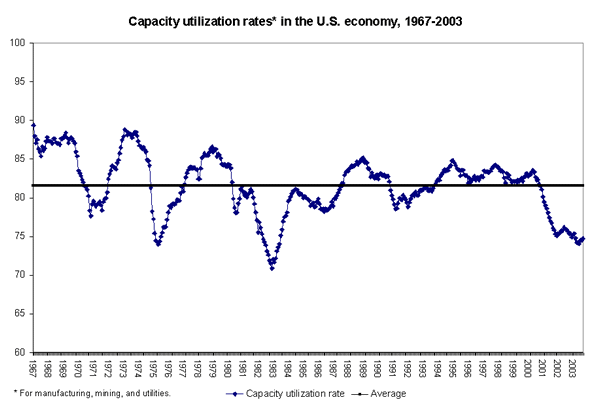Snapshot for November 12, 2003.
U.S. economy still showing signs of slack
The 7.2% growth in gross domestic product (GDP) reported by the Bureau of Economic Analysis (BEA) two weeks ago constituted welcome news for the U.S. economy. Especially encouraging was the surge in the business-investment component of GDP that had generally been lackluster throughout the recession and into the recovery so far.
That said, there remains a lot of slack in the U.S. economy. One measure of economic slack is the capacity utilization rate, tracked by the Federal Reserve, which gauges the degree of slack in capital equipment in the U.S. economy. This provides a measure of how much of the economy’s potential productive capacity is in use in a given quarter. Full capacity generally occurs before this index reaches 100. The average capacity utilization rate in the U.S. economy since 1967 is 81.6%.

The U.S. economy currently remains well below this average, even taking into account the rapid growth in the third quarter. Capacity utilization in September 2003 (the latest month available) stood at 74.8%. The figure below shows how far capacity utilization has fallen since the beginning of the recession and how much it must rise before it reaches the historical average. While last quarter’s growth numbers were welcome, it remains to be seen whether or not growth in the coming year will be strong and sustained enough to take up the slack in capacity utilization.
This week’s Snapshot was written by EPI Economist Josh Bivens.
Check out the archive for past Economic Snapshots.
